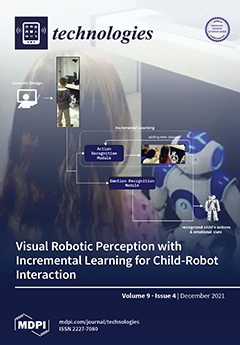Open AccessReview
Three-Dimensional Printed Models for Preoperative Planning and Surgical Treatment of Chest Wall Disease: A Systematic Review
by
Beatrice Leonardi, Annalisa Carlucci, Antonio Noro, Mary Bove, Giovanni Natale, Giorgia Opromolla, Rosa Mirra, Davide Pica, Francesca Capasso, Vincenzo Di Filippo, Gaetana Messina, Francesco Ferrigno, Anna Cecilia Izzo, Giovanni Vicidomini, Mario Santini and Alfonso Fiorelli
Cited by 2 | Viewed by 2441
Abstract
Introduction: In chest wall reconstruction, the main objectives are the restoration of the chest wall integrity, function, and aesthetic, which is often achieved with the placement of implants. We aimed to evaluate whether 3D printed models can be useful for preoperative planning and
[...] Read more.
Introduction: In chest wall reconstruction, the main objectives are the restoration of the chest wall integrity, function, and aesthetic, which is often achieved with the placement of implants. We aimed to evaluate whether 3D printed models can be useful for preoperative planning and surgical treatment in chest wall reconstruction to improve the outcome of the surgery and to reduce the rate of complications. Methods: We conducted a systematic review of literature using PubMed, Scopus, Embase, and Google Scholar databases until 8 November 2021 with the following keywords: (“3D printing” or “rapid prototyping” or “three-dimensional printing” or “bioprinting”) and (“chest wall” or “rib” or “sternum” or “ribcage” or “pectus excavatum”). Results were then manually screened by two independent authors to select studies relevant to 3D printing application in chest wall reconstruction. The primary outcome was morphological correction, and secondary outcomes were changes in operating time and procedure-related complication rate. Results: Eight articles were included in our review. Four studies were related to pectus excavatum correction, two studies were related to rib fracture stabilization, and two studies were related to chest wall tumor resection and reconstruction. Seven studies reported 3D printing of a thorax model or template implants for preoperative planning and implant modeling, and one study reported 3D printing of a PEEK prosthesis for direct implantation. Four studies reported comparison with a conventionally treated control group, and three of them detected a shorter operative time in the 3D printing model-assisted group. Satisfactory morphological correction was reported in all studies, and six studies reported a good implant fitting with minimal need for intraoperative adjustments. There were no major intraoperative or postoperative complications in any of the studies. Conclusions: The use of 3D printing models in chest wall reconstruction seems to be helpful for the production of personalized implants, reducing intraoperative adjustments. Results of morphological correction and postoperative recovery after the 3D printing-assisted surgery were satisfactory in all studies with a low rate of complication. Our literature review suggests good results regarding prosthesis fitting, accuracy of surgical planning, and reduction in operative time in 3D printing-assisted procedures, although more evidence is needed to prove this observation.
Full article
►▼
Show Figures





